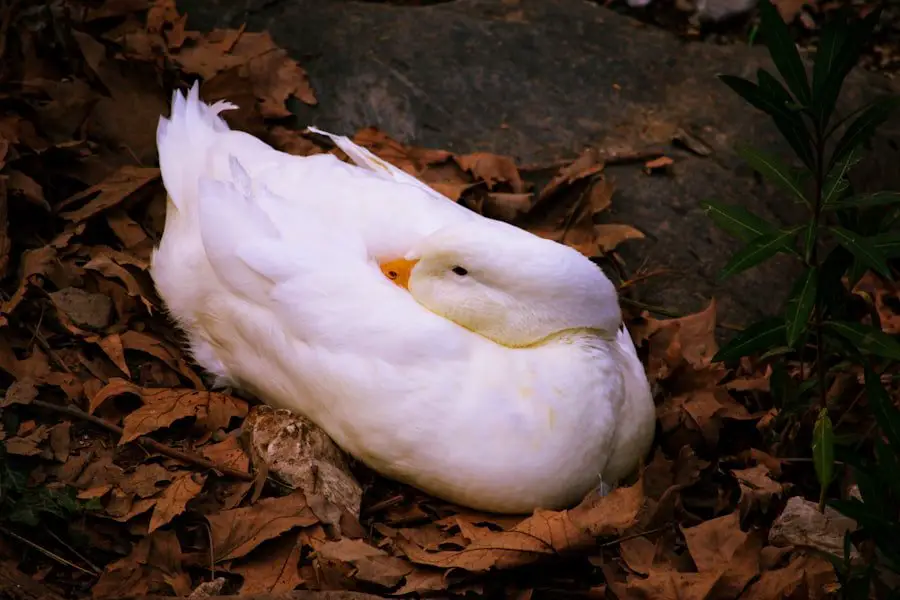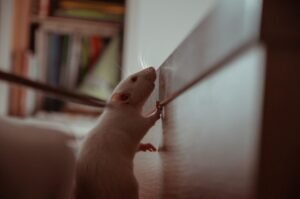Budgerigar parakeets, commonly called budgies, are small, vibrant birds native to Australia and widely kept as pets globally. These intelligent creatures are capable of learning tricks and mimicking human speech. Budgies display a range of colors, including blue, green, yellow, and white, and can live up to 15 years with appropriate care.
Known for their cheerful chirping and sociable nature, budgies are engaging companions. In their natural habitat, budgies live in large flocks, spending their time flying, foraging, and interacting with other birds. As pets, they require an environment that simulates these natural behaviors.
This includes a spacious cage, diverse diet, toys for mental stimulation, and regular human interaction. Budgies thrive on social engagement and need both mental and physical activities to maintain their well-being. Proper care for pet budgies involves replicating aspects of their wild lifestyle.
This approach helps ensure their health and happiness in captivity. When provided with suitable living conditions and attention, budgies can form strong bonds with their owners and become cherished pets.
Key Takeaways
- Budgerigar parakeets, also known as budgies, are small, colorful parrots native to Australia and are popular pets due to their playful and social nature.
- When setting up a cage for budgerigar parakeets, it’s important to provide enough space for them to fly and exercise, as well as perches, toys, and hiding spots for mental stimulation.
- A balanced diet for budgerigar parakeets includes a variety of seeds, pellets, fresh fruits and vegetables, and occasional treats like millet sprays.
- Budgerigar parakeets need regular exercise outside of their cage, and providing toys, swings, and time outside the cage for supervised play can help keep them mentally and physically healthy.
- Regular veterinary check-ups, a clean living environment, and a watchful eye for signs of illness are important for maintaining the health and well-being of budgerigar parakeets.
Housing and Cage Setup
Cage Size and Material
When it comes to housing budgerigar parakeets, it’s essential to provide them with a spacious and stimulating environment. The minimum recommended cage size for a single budgie is 18x18x18 inches, but larger is always better. The cage should be made of sturdy metal with narrow bar spacing to prevent escape.
Perches and Exercise
It’s also important to provide plenty of perches at different heights to encourage exercise and prevent boredom. Natural wood perches are ideal as they help keep your budgie’s feet healthy and provide a more natural feel.
Toys, Enrichment, and Hygiene
In addition to perches, it’s important to include a variety of toys and enrichment activities in the cage. This can include swings, ladders, bells, and puzzle toys to keep your budgie mentally stimulated. It’s also important to provide a shallow dish of water for bathing, as budgies enjoy splashing around to keep clean.
Placement and Safety
Finally, the cage should be placed in a draft-free area away from direct sunlight and any potential hazards like other pets or household chemicals. With the right setup, your budgie will have a safe and comfortable home where they can thrive.
Diet and Nutrition

Proper nutrition is essential for the health and well-being of budgerigar parakeets. In the wild, budgies primarily eat a diet of seeds, grains, fruits, and vegetables. As pets, it’s important to provide them with a varied diet that includes a high-quality seed mix as well as fresh fruits and vegetables.
The seed mix should be specifically formulated for budgies and should include a variety of seeds such as millet, canary seed, and oats. It’s important to avoid seed mixes that contain a lot of sunflower seeds, as these are high in fat and can lead to obesity. In addition to seeds, budgies should also be offered fresh fruits and vegetables on a daily basis.
This can include foods like apples, carrots, broccoli, and leafy greens. It’s important to introduce new foods gradually to allow your budgie to adjust to the taste and texture. It’s also important to provide a cuttlebone or mineral block in the cage to ensure that your budgie gets enough calcium for healthy bones and beak maintenance.
Finally, fresh water should be available at all times, either in a shallow dish or a water bottle. With a balanced diet, your budgie will have the energy and nutrients they need to stay healthy and active.
Exercise and Enrichment
| Activity | Frequency | Duration |
|---|---|---|
| Walking | 5 times a week | 30 minutes |
| Running | 3 times a week | 45 minutes |
| Yoga | 2 times a week | 60 minutes |
Budgerigar parakeets are highly active birds that require plenty of exercise and mental stimulation to stay healthy and happy. In the wild, budgies spend their days flying, foraging for food, and socializing with other birds. As pets, it’s important to provide them with opportunities for exercise and enrichment to mimic their natural behaviors.
This can include regular out-of-cage time for flying and exploration, as well as a variety of toys and activities in the cage. To encourage exercise, it’s important to provide plenty of perches at different heights in the cage to encourage climbing and hopping. Swings, ladders, and ropes can also provide opportunities for physical activity.
In addition to physical exercise, it’s important to provide mental stimulation for your budgie. This can include puzzle toys, foraging toys, and toys that encourage natural behaviors like shredding and chewing. It’s also important to rotate toys regularly to prevent boredom and keep your budgie engaged.
Regular out-of-cage time is also important for your budgie’s physical and mental well-being. This can include supervised time outside the cage for flying and exploration in a safe area of your home. It’s important to bird-proof the area by removing any potential hazards like open windows or other pets.
With plenty of exercise and enrichment, your budgie will stay healthy and happy.
Health and Veterinary Care
Like all pets, budgerigar parakeets require regular veterinary care to ensure their health and well-being. It’s important to find an avian veterinarian who is experienced in treating birds, as they have specific needs and health concerns that differ from other pets. Regular check-ups are important for monitoring your budgie’s overall health and catching any potential issues early on.
In addition to regular check-ups, it’s important to keep an eye on your budgie’s behavior and appearance for any signs of illness or distress. This can include changes in appetite, energy levels, or droppings, as well as any unusual lumps or bumps on the body. It’s also important to keep an eye on your budgie’s beak, nails, and feathers for any signs of overgrowth or abnormalities.
In addition to veterinary care, it’s important to provide a clean and safe environment for your budgie to prevent illness and injury. This includes regular cleaning of the cage and accessories, as well as providing a balanced diet and plenty of exercise. With proper care and attention, your budgie can live a long and healthy life.
Training and Socialization

Target Training for Budgies
One popular training method is target training, where you use a stick or target to guide your budgie to perform certain behaviors. This can include stepping onto your finger or performing simple tricks like waving or spinning in a circle. It’s important to be patient and consistent with training, as budgies can be sensitive to changes in routine or environment.
Socialization for a Happy Budgie
In addition to training, it’s important to provide plenty of socialization for your budgie. Budgies are social birds that thrive on interaction with their human companions. This can include talking to your budgie, spending time near their cage, or even teaching them simple games like peek-a-boo or hide-and-seek.
Raising a Well-Trained and Socialized Pet
With patience and positive reinforcement, your budgie can become a well-trained and socialized pet that brings joy to your life.
Breeding and Nesting
Breeding budgerigar parakeets is a complex process that requires careful planning and consideration. Before deciding to breed your budgies, it’s important to research the process thoroughly and ensure that you have the time, resources, and knowledge necessary to care for the offspring. Breeding should only be done with healthy adult birds that have been properly quarantined and screened for any potential health issues.
If you decide to breed your budgies, it’s important to provide them with a suitable nesting box in their cage. The nesting box should be large enough for both birds to enter comfortably and should be filled with nesting material such as shredded paper or wood shavings. It’s important to monitor the breeding pair closely for any signs of aggression or distress during the nesting process.
Once the eggs are laid, it’s important to provide the breeding pair with plenty of privacy and quiet to ensure that they can care for their offspring without disturbance. It’s also important to provide a balanced diet for the breeding pair to ensure that they have the energy and nutrients necessary for successful breeding. With proper care and attention, your breeding pair can raise healthy offspring that will bring joy to their new owners’ lives.
If you’re interested in learning more about the care and behavior of budgerigar parakeets, you might also enjoy reading about the latest advancements in spatial computing with the Apple Vision Pro. Understanding the technology behind spatial computing could help you create a more enriching environment for your pet budgerigar parakeet.
FAQs
What is a budgerigar parakeet?
A budgerigar parakeet, also known as a budgie, is a small, colorful bird that is a popular pet worldwide. They are native to Australia and are known for their playful and social nature.
What do budgerigar parakeets eat?
In the wild, budgerigar parakeets primarily eat seeds, grasses, and other vegetation. As pets, they are typically fed a diet of commercial bird seed mix, supplemented with fresh fruits and vegetables.
How long do budgerigar parakeets live?
Budgerigar parakeets have an average lifespan of 5-10 years, although some can live up to 15 years with proper care.
Are budgerigar parakeets good pets?
Budgerigar parakeets are popular pets due to their small size, playful nature, and ability to mimic human speech. They can make great companions for those willing to provide them with proper care and attention.
Do budgerigar parakeets require special care?
Budgerigar parakeets require a spacious cage, regular social interaction, and a balanced diet to thrive. They also need regular access to fresh water and opportunities for exercise and mental stimulation.
Can budgerigar parakeets be trained?
Budgerigar parakeets are highly intelligent and can be trained to perform tricks and mimic sounds. With patience and positive reinforcement, they can learn to step up onto a finger, play with toys, and even perform simple tasks.




















+ There are no comments
Add yours